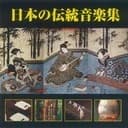Historical Origins and Cultural Significance
The Kumoi scale emerged from traditional Japanese gagaku court music and later became prominent in koto and shakuhachi repertoire during the Edo period. Unlike Western scales built on chains of fifths, the Kumoi scale reflects the Japanese aesthetic principle of "ma" (negative space), where the absence of certain tones creates as much musical meaning as the notes themselves. The scale's name "Kumoi" translates to "above the clouds," suggesting its ethereal, floating quality that distinguishes it from the earthier E Iwato or the more contemplative E In.
When comparing E Kumoi to its Western counterpart E Minor Pentatonic, the most striking difference lies in the major second (F♯) versus the minor third found in blues-based scales. This intervallic choice gives Kumoi its characteristic brightness while the absence of the perfect fourth and major seventh creates tension that resolves in uniquely Japanese ways.
Melodic Character and Voice Leading Techniques
The E Kumoi scale's intervallic structure (whole-step, half-step, major third, whole-step, minor third) creates natural voice leading opportunities that differ significantly from Western diatonic motion. The half-step between F♯ and G functions as a chromatic passing tone that pulls toward resolution, while the large major third leap from G to B creates dramatic melodic contour. This intervallic relationship shares similarities with E Major but omits the fourth and seventh degrees, creating ambiguity between major and minor tonalities.
In melodic practice, the Kumoi scale encourages stepwise motion around the F♯-G half-step while using the G-B leap for dramatic effect or phrase boundaries. The scale's avoidance of traditional leading tones means cadential figures rely on the pull between B (perfect fifth) and E (tonic), or the distinctive resolution from C♯ back to E. These voice leading characteristics make the scale particularly effective for creating floating, suspended harmonic textures that resist Western functional harmony.
Harmonic Applications and Chord Progressions
Harmonically, the E Kumoi scale supports quartal and quintal voicings more naturally than tertian harmony. The available notes generate chords like Esus2, F♯m(no5), and Bsus4, creating harmonic movement through suspended sonorities rather than major-minor resolution. This harmonic language contrasts sharply with the blues-oriented progressions found in E Minor Pentatonic or the modal stability of E Dorian.
Contemporary composers often use E Kumoi as a color scale over static bass drones or as an upper-structure sound over more conventional Western progressions. When layered over an E major chord, the scale adds the ninth (F♯) and thirteenth (C♯) while avoiding the eleventh, creating a bright, open sound. Over an A major or C♯ minor chord, the scale functions as an exotic upper extension, sharing this modulatory flexibility with E Hirajoshi but with a lighter, more optimistic character.
Practical Applications in Composition and Improvisation
For improvisers transitioning from Western pentatonics, the E Kumoi scale offers a bridge between familiar territory and Japanese modal thinking. Begin by treating it as E Major Pentatonic with a flattened third (G natural instead of G♯), then explore the unique melodic opportunities created by the half-step motion. The scale works particularly well in modal contexts where the harmony remains static, allowing the melodic tensions to emerge without functional harmonic interference.
In composition, E Kumoi excels in creating atmospheric passages, film scores evoking Japanese settings, or fusion contexts blending Eastern and Western elements. The scale pairs effectively with parallel modes like E Phrygian for darker passages or can transition smoothly to E Lydian for brighter, more Western-sounding sections. Its pentatonic structure makes it accessible for beginners while offering advanced players sophisticated options for harmonic superimposition and polytonal exploration, particularly when combined with other Japanese scales in the same key center.





